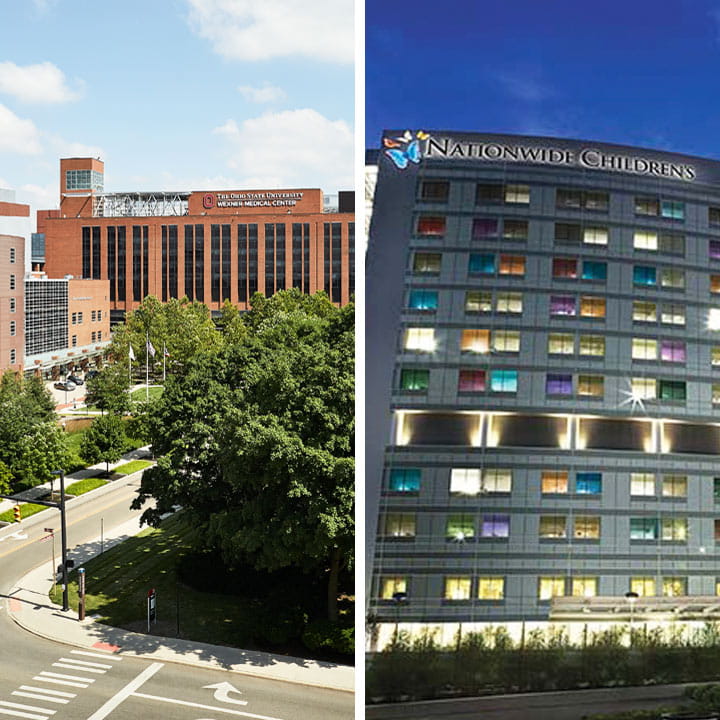
Researchers combine nanobiotechnology, neutrophils and nucleic acid to combat lupus
 A grant from the Arthritis Foundation is funding an Internal Medicine – Pediatric (“Med-Ped”) Rheumatology Fellowship at The Ohio State University College of Medicine and Nationwide Children’s Hospital.
A grant from the Arthritis Foundation is funding an Internal Medicine – Pediatric (“Med-Ped”) Rheumatology Fellowship at The Ohio State University College of Medicine and Nationwide Children’s Hospital.
Securing funding for a combined adult and pediatric rheumatology fellowship can be challenging. That’s mainly because of the length of the fellowship — instead of a two- to three-year adult fellowship or a three-year pediatric one, a Med-Ped rheumatology fellowship is four years.
Another hurdle for a combined fellowship is the resources it requires. That’s because it often means diverting funding away from a position that’s fully devoted to pediatric training, or one that’s fully devoted to internal medicine.
“We proposed that a combined fellowship would be a good thing to fund, and the Arthritis Foundation, fortunately, agreed,” says Stacy Ardoin, MD, a pediatric- and internal medicine-trained rheumatologist and section chief of Rheumatology at Nationwide Children’s Hospital. “They’ve been a huge supporter for patients with rheumatic disease, and they’ve been tremendous supporters of pediatric rheumatology research, as well.”
Rheumatologists who undergo fellowship training in both internal medicine and pediatrics have unique capabilities that those with training in just one area or the other don’t, Dr. Ardoin says. The major benefit, of course, is their ability to care for people across the age spectrum. While that can be helpful in an academic setting, it’s especially helpful in regions of the country that are underserved, where one rheumatologist with combined training can help everyone.
Two past Med-Ped Fellowship graduates from the Ohio State College of Medicine and Nationwide Children’s Hospital have gone on to do just that, Dr. Ardoin says — one practicing in rural Utah and the other in southeastern Ohio.
Kyla Driest, MD, a pediatric rheumatologist at Nationwide Children’s Hospital and Pediatric Rheumatology Fellowship director, adds that a specialist with combined training can also help patients bridge the transition of care from pediatrics to internal medicine.
“There can be a lot of gaps in care between pediatric rheumatology and adult rheumatology,” says Dr. Driest, who submitted the grant proposal to the Arthritis Foundation. “A lot of patients fall through the cracks during that time. Patients have much higher chances of being admitted to the hospital. Med-Peds are uniquely trained to understand that patient population because they have that different perspective.”
A “strong connection” between the adult and pediatric programs at the Ohio State Wexner Medical Center and Nationwide Children’s Hospital benefits fellows, Dr. Ardoin says.
Not only does it afford combined grand rounds and a faculty devoted to diverse interests, but it also features training from one of the nation’s foremost leaders in musculoskeletal ultrasound: Edward Oberle, MD, assistant professor of Clinical Pediatrics in the Division of Rheumatology at Nationwide Children’s Hospital and the Division of Pediatrics at The Ohio State University College of Medicine and director of Rheumatology Musculoskeletal Ultrasound at Nationwide Children’s Hospital. In addition, Dr. Oberle serves as an education mentor for Ultrasound School of North American Rheumatologists (USSONAR), the preeminent group for musculoskeletal ultrasound education in North America, and he’s a member of the Childhood Arthritis and Rheumatology Research Alliance (CARRA) and a cofounder of the ultrasound research group. He is currently collaborating on research projects focusing on musculoskeletal ultrasound learning and musculoskeletal imaging use for monitoring treatment outcomes in children with JIA,
“That’s a great strength,” Dr. Ardoin says, adding that the programs also have a strong integration with research across both divisions and opportunities for fellows to perform a variety of research — from lab-based to clinical.
In addition, the Rheumatology division at Nationwide Children’s Hospital is robust, with nine faculty members and access to a psychologist, nurse practitioner, pharmacist and social worker. At the Ohio State Wexner Medical Center, the Division of Rheumatology and Immunology has 11 faculty members, as well as access to a pharmacist and a large infusion center where fellows can learn how to manage infusions.
Another benefit of training with Ohio State’s Rheumatology and Immunology division is a faculty with a number of recent graduates, says Ali Ajam, MBBS, clinical associate professor of Internal Medicine at the College of Medicine and Adult Rheumatology Fellowship director.
“They’re more in tune with recent literature and interested in teaching,” he says. “They provide good mentorship for fellows.”
Candidate interviews for the fellowship position are going on now, with a match expected by the end of the year. Training starts July 1, 2024, beginning in either pediatrics or internal medicine and focusing on that discipline as their main area of emphasis for the first year. They’ll then switch the following year. Both years, however, include a continuity clinic where the fellow will see patients from the opposite discipline.
While some clinical experience will continue into the third and fourth years, those years are primarily focused on scholarly activity depending on each fellow’s interests.
Because of the flexibility of the program, fellows can choose between pursuing a master’s degree in areas like public health, translational research, education or operational excellence, or a certification in musculoskeletal ultrasound. Although ultrasound training is peppered throughout the entire fellowship, some fellows choose to focus on that as their scholarly work and become fully credentialed, receiving the Musculoskeletal Ultrasound Certification in Rheumatology — RhMSUS certification — through the American College of Rheumatology.
“There are some common requirements for all of our fellows, but particularly on the pediatric side, we want our fellows to guide where they want to go with their scholarly work,” Dr. Ardoin says. “Some fellows may do research in a laboratory, and some may be doing mostly education.”
“We know every fellow is different in terms of what they’re interested in and their career trajectory,” Dr. Driest says. “We help them find their niche rather than dictating what they should do.”